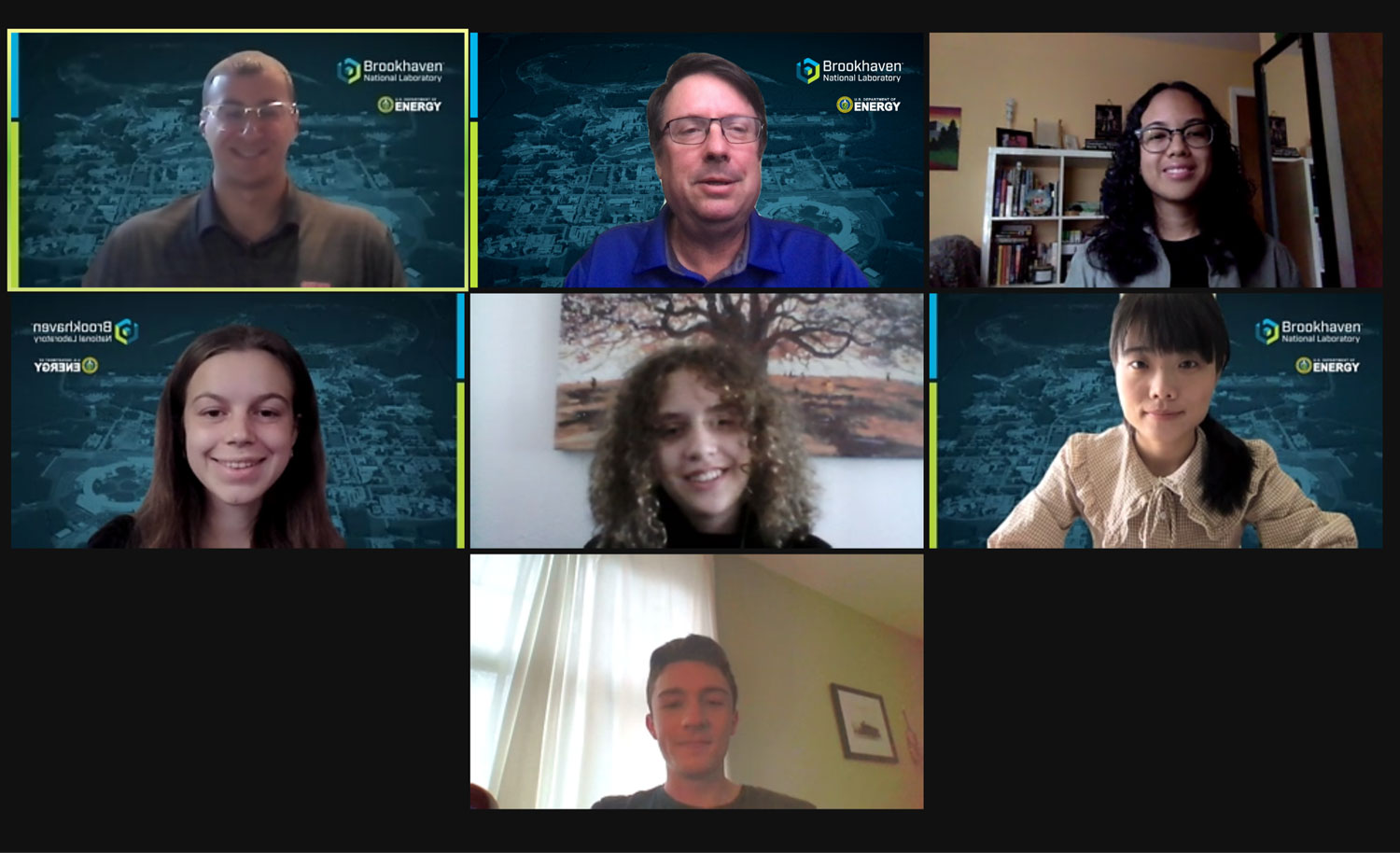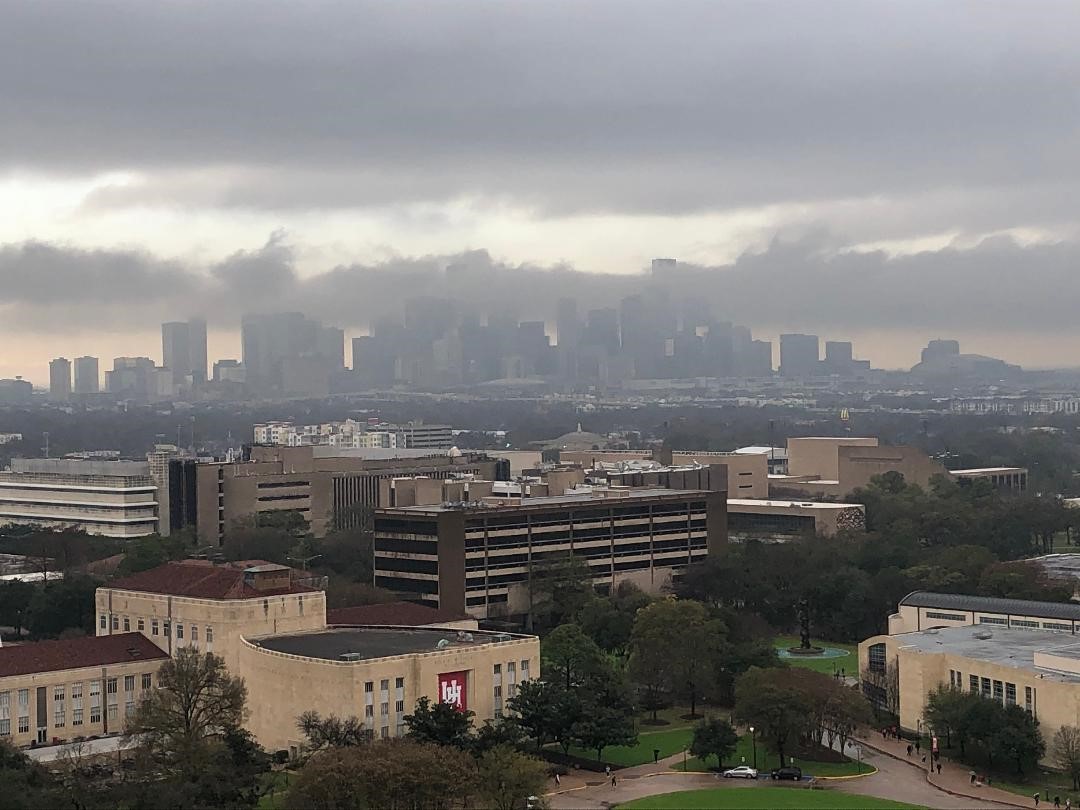TRACER Talk: ‘Making Lemonade From Lemons’
Published: 23 August 2021
Editor’s note: Michael Jensen, a meteorologist at Brookhaven National Laboratory (BNL) in New York, is the principal investigator for ARM’s TRacking Aerosol Convection interactions ExpeRiment (TRACER). The TRACER campaign is scheduled to start October 1, 2021, in the Houston, Texas, area. Dié Wang, an assistant environmental scientist at BNL, is a convective processes researcher and a lead mentor for ARM weighing bucket rain gauges and disdrometers. Jensen sent in this blog post about interns helping him and Wang with pre-TRACER science activities.

During the fall of 2020, several TRACER scientists from U.S. Department of Energy (DOE) national labs advertised opportunities for summer 2021 internships that offered the opportunity to participate in different aspects of the campaign. The team at BNL looked for interns to help with campaign forecasting activities and analysis of the first few months of data. The advertisement brought responses from a number of talented students, and we were lucky to have Marcie Hogan, Grace Kowalski, Amanda Rakotoarivony, Domenic Taylor, and Brian Wittemann sign on to join us.
At that time, we also hoped the interns would be able to come to Long Island and have an in-person internship experience. The continuing COVID pandemic made us change our plans. Following the postponement of the TRACER campaign and the switch to virtual internships, new research plans and goals needed to be made.
Making lemonade from lemons, we decided to dig into existing data sets to better understand the Houston weather, clouds, and precipitation. Each intern examined the variability of different meteorological measures as a function of large-scale weather states derived from applying machine learning techniques to forecast model fields.
Read about the interns’ experiences:
Marcie Hogan, State University of New York at Geneseo (SUNY Geneseo)
“Through my internship, I have developed a deeper understanding and passion for the meteorological sciences, a branch of science with which I had no prior experience.”
Marcie Hogan
Through my internship, I have developed a deeper understanding and passion for the meteorological sciences, a branch of science with which I had no prior experience. I have learned the fundamentals of forecasting and weather model interpretation, expanded my Python skills by working with atmospheric data sets and statistical libraries, and gained exposure to techniques used for analysis with meteorological imagery.
To assist with the TRACER campaign preparation, I studied the diurnal cycle of precipitable water vapor (PWV) in the Houston region as it relates to coastal proximity and varying weather patterns using GPS measurements. One conclusion I found through statistical analysis and plotting was that anticyclonic weather patterns yielded higher PWV with a stronger diurnal cycle, whereas post-trough weather patterns saw lower maximum PWV and a deviation from a traditional diurnal cycle. (Anticyclonic systems in the Northern Hemisphere have clockwise winds and are associated with high surface pressure; a trough is a region of relatively lower pressure.)
I had a wonderful time this summer working alongside Mike Jensen, Dié Wang, and my co-interns. I leave with a wonderful first research experience under my belt and a newfound appreciation for both research and meteorology!
Grace Kowalski, Purdue University
I am very grateful to have had this internship opportunity and am glad to have learned so much throughout it. I came in with minimal knowledge of Python coding, some knowledge of atmospheric sciences, and almost none with forecasting and meteorology. My knowledge in all of these areas has expanded so much, to the point where I am comfortable coding many different kinds of plots and using Python to organize data, and I now have a solid understanding of new terms in meteorology.
I studied variability in the areal characteristics of precipitation in the Houston region using the National Weather Service’s Next-Generation Radar data. One of my findings was that anticyclone regimes have a clear diurnal cycle influence in their precipitation coverage, while trough regimes do not. These findings help quantify the variability of precipitation and convective cloud properties among different large-scale meteorological conditions, an important step toward isolating the effects of aerosols on deep convective systems.

Overall, I am very happy with the outcome of my internship. I feel that I contributed to a larger cause and grew a lot in terms of my skills. Thank you, Dié, Mike, and the other interns, so much for this experience!
Amanda Rakotoarivony, Longwood High School (New York)
Having been a part of this internship allowed me to truly connect the topics I’ve learned in school to the real-world research that’s being done, whether it was the trigonometry involved in finding wind vector components or the Python code utilized to turn years’ worth of data into subplots that could be analyzed for trends.
This project showed me how research and collaboration is interdisciplinary at the core. In addition, I learned how forecasting encompasses more variables than just surface measurements—it also includes looking at maximum radar reflectivity, PWV, radar echo top heights, PM 2.5 concentrations (particles with diameters of 2.5 micrometers or smaller), and more.
At the conclusion of my project, I was able to understand how sea breeze affects the diurnal cycle of surface temperatures and winds, and I learned how they vary depending on the site’s proximity from a body of water.
I am extremely grateful for the enriching experience I had this summer under the mentorships of Mike and Dié.
Domenic Taylor, Pennsylvania State University
This past summer, I got the chance to work alongside two really amazing mentors at Brookhaven and four other awesome interns within our research group. Together we worked to provide some initial analysis of local convection in the Houston area ahead of the TRACER campaign.
At first, I faced a lot of challenges working remotely over a Brookhaven server and a lot of problems with my computer being able to handle the size and number of data files I was using. In addition, I was immediately reminded of how limited my knowledge of Python was, especially when it came to making plots. However, Dié, Mike, and my fellow interns were always there when I needed help, and I think that just helped everything run smoothly given the virtual setting of this internship. After this first week or so of working out technological bugs, we were able to dive into the real meat of this research.
“Given my passion for meteorology, I was psyched to have this position in the first place, but writing code and spending probably way too long formatting plots didn’t feel like work because I found the topic so fascinating.”
Domenic Taylor
Given my passion for meteorology, I was psyched to have this position in the first place, but writing code and spending probably way too long formatting plots didn’t feel like work because I found the topic so fascinating. At my home institution of Penn State, I have a few meteorology courses under my belt, but this research experience taught me so much that I didn’t know. To be able to visualize how the local geography, coastlines, and urban environment of Houston could influence the local circulations that produce thunderstorms was so intriguing—and something that no Penn State course could ever go in depth into. In addition, with our forecasting briefings, it was really interesting to learn about the Houston climate and gain forecasting skills that are much different from those used for central Pennsylvania.
Overall, I am very grateful to have had this experience and to have worked alongside such dedicated interns and mentors at Brookhaven this summer. I feel that this internship has given me plenty of research skills, expanded my understanding of meteorology, and fed my desire to continue research in the atmospheric sciences field.
In the future, I definitely intend to follow along with the TRACER campaign starting this October and keep in touch with my team to see what new adventures my fellow interns embark on next.
Brian Wittemann, SUNY Oneonta
In the course of the internship, I have developed a useful skill for future endeavors consisting of an ability to work with real meteorological statistics and observations, such as those from the National Weather Service Next-Generation Radar. This skill allowed me to improve my familiarity constructing Python scripts from last summer’s internship. In addition, this summer’s internship helped expand my forecasting capacity, specifically with aerosols, because of the opportunity to work with professional meteorologists in several fields.
My role in preparation for the TRACER field campaign was to apply a cell tracking algorithm to develop statistics on cell lifetime for various weather pattern regimes. Overall, this internship allowed me to gain valuable research experience prior to beginning graduate school at Stony Brook University.
I would like to thank Mike, Dié, DOE, and ARM for this one-of-a-kind opportunity.
Editor’s note (March 22, 2022): A new paper in the Journal of Geophysical Research: Atmospheres features the work discussed in this blog. Read about the paper.
Keep up with the Atmospheric Observer
Updates on ARM news, events, and opportunities delivered to your inbox
ARM User Profile
ARM welcomes users from all institutions and nations. A free ARM user account is needed to access ARM data.


















